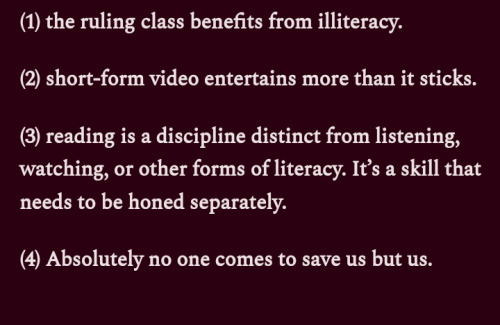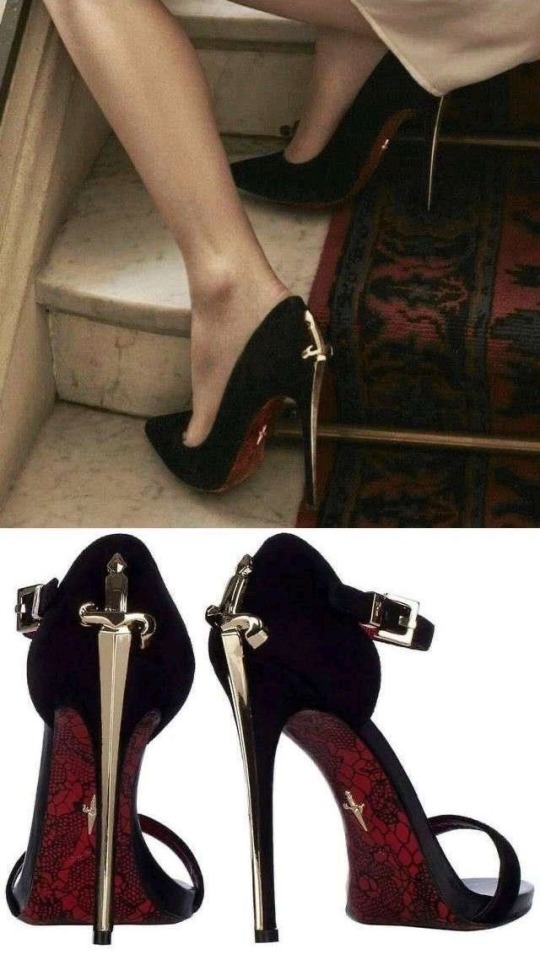Hi Hello Friends! Does Anyone Around These Parts Have Some Solid Knowledge Of Tarot And A Willingness
hi hello friends! does anyone around these parts have some solid knowledge of tarot and a willingness to let me pick your brain? i have a character who has a very specific plot point involving tarot and i know next to nothing, possibly less than nothing, and would love to figure out how to sound like that's not the case.
More Posts from Anovelidea13 and Others
A Writer's Guide to Character Development
I don’t know about you guys, but I can only answer “what’s your character’s favorite flavor of ice cream” so many times before I realize those lists are not going to help me actually write the character.
So, instead, I like to drabble practice. Answer these ten key questions about your character (answer in character). Then, after you know them a little better, write ten scenes (NOT part of your planned story) with the ten prompts below. Set it in your world, but it can be whenever you want—pre-story, or post-story, or mid-story. You could even write two scenes for one prompt, contrasting where your character starts the story and where they end up, or write one in first person and then write it again in third.
Just has to cover events that are NOT plot points. The point of the exercise is to come up with scenes you can toss out as soon as you finish them. You might end up using some of the lines or scenes you come up with, but for now you’re just playing around.
QUESTIONS
What does your character tell everyone is their greatest fear? What is it actually? Is it the same? Why or why not?
What is their greatest strength and greatest weakness?
Name the most important people to this character. All of them. Family and close friends and lovers.
Does your character have enemies? Who and why?
What is your character’s favorite holiday and why?
How does your character like to present himself/herself? How do they dress? How do they act? Are they friendly or standoffish? Do they like to make a scene, or are they a wallflower?
What is their love language? How do they express it, and how do they best receive it?
What is their highest virtue? What is something that peers would praise about your character? What do they value most in other people?
Are they messy or neat? Why or why not?
If your character could change one thing about their life, what would it be and why? And, conversely, if they could only save one thing from their life, what would it be?
PROMPTS
Your character has had a bad day. What happened?
Your character’s loved one is sick. What do they do?
It’s your character’s birthday.
Someone is hiding something from your character. How do they uncover what it is?
Your character has just heard the news. A character they loved is dead. Describe the rest of their day.
Your character is on their own for dinner.
Your character has the day to himself/herself. No responsibilities, nothing. What do they do?
In the middle of the night, your character hears a noise in the house.
Your character knows they will die at midnight. What is their last day like?
Your character suddenly develops amnesia. Their loved ones try to jog your character’s memories by taking them to familiar locations and reminiscing.

"Absolutely no one comes to save us but us."
Ismatu Gwendolyn, "you've been traumatized into hating reading (and it makes you easier to oppress)", from Threadings, on Substack [ID'd]
If I could still do hours in heels like I could pre-Lockdown, I would absolutely be buying these.
Jude would wear these, she’d run in these, she’d murder in these, and id eat it up

About to move on to Book 2, and I'm going to really struggle not picturing this now. Thanks, Tumblr.
Nightmare every time Elspeth is in trouble:






Cottagecore aesthetic






the purest, most sincere love
hot artists don't gatekeep
I've been resource gathering for YEARS so now I am going to share my dragons hoard
Floorplanner. Design and furnish a house for you to use for having a consistent background in your comic or anything! Free, you need an account, easy to use, and you can save multiple houses.
Comparing Heights. Input the heights of characters to see what the different is between them. Great for keeping consistency. Free.
Magma. Draw online with friends in real time. Great for practice or hanging out. Free, paid plan available, account preferred.
Smithsonian Open Access. Loads of free images. Free.
SketchDaily. Lots of pose references, massive library, is set on a timer so you can practice quick figure drawing. Free.
SculptGL. A sculpting tool which I am yet to master, but you should be able to make whatever 3d object you like with it. free.
Pexels. Free stock images. And the search engine is actually pretty good at pulling up what you want.
Figurosity. Great pose references, diverse body types, lots of "how to draw" videos directly on the site, the models are 3d and you can rotate the angle, but you can't make custom poses or edit body proportions. Free, account option, paid plans available.
Line of Action. More drawing references, this one also has a focus on expressions, hands/feet, animals, landscapes. Free.
Animal Photo. You pose a 3d skull model and select an animal species, and they give you a bunch of photo references for that animal at that angle. Super handy. Free.
Height Weight Chart. You ever see an OC listed as having a certain weight but then they look Wildly different than the number suggests? Well here's a site to avoid that! It shows real people at different weights and heights to give you a better idea of what these abstract numbers all look like. Free to use.
Essential Beat Sheet for Writers
ACT ONE: SETUP
1. Opening Image: A snapshot of your story’s world and tone. Who are we following? What’s at stake?
2. Theme Stated: A subtle hint about the story’s deeper meaning or lesson, often posed as a question or challenge.
3. Setup: Introduce your protagonist, their ordinary world, supporting characters, and the status quo. Show us what needs to change.
4. Catalyst: The inciting incident that flips the protagonist’s world upside down. This is the point of no return.
5. Debate: Your protagonist hesitates. Should they step forward into the unknown or retreat? This beat builds anticipation.
ACT TWO: CONFRONTATION
6. Break Into Two: The protagonist makes a decision and steps into a new world (literal or figurative). The adventure begins.
7. B Story: The subplot kicks in—often a relationship or secondary goal that supports the main story’s theme.
8. Fun and Games: The “heart” of the story. Deliver on the premise and explore the stakes through action, conflict, and character growth.
9. Midpoint: A major turning point where everything changes. Stakes are raised. Success feels closer—or failure looms larger.
10. Bad Guys Close In: External and internal pressures mount. Allies falter. Enemies strike. Doubts creep in.
11. All Is Lost: The darkest moment. The protagonist experiences a significant loss or setback.
12. Dark Night of the Soul: A pause for reflection. Your protagonist processes their failure and digs deep to find the courage to move forward.
ACT THREE: RESOLUTION
13. Break Into Three: Armed with new insight or strength, the protagonist takes decisive action to face the story’s central conflict.
14. Finale: The climax. Everything comes to a head in a final showdown or resolution. Your protagonist proves they’ve changed—or failed to.
15. Closing Image: A mirror of the opening image, showing how the world—and your protagonist—has transformed.

Blessed Monday witchess
I love Frostbite Studios so much. STUNNING artwork.











FROSTBITE STUDIOS ART IS MY ROMAN EMPIRE I SWEAR
this is like drugs. But BETTER
Art belongs to Frostbite.studios on Instagram
-
 hellopollywog liked this · 4 months ago
hellopollywog liked this · 4 months ago -
 jmpixelles liked this · 4 months ago
jmpixelles liked this · 4 months ago -
 katyazy liked this · 4 months ago
katyazy liked this · 4 months ago -
 anovelidea13 reblogged this · 4 months ago
anovelidea13 reblogged this · 4 months ago -
 anovelidea13 liked this · 4 months ago
anovelidea13 liked this · 4 months ago -
 kiera-raelyn reblogged this · 4 months ago
kiera-raelyn reblogged this · 4 months ago -
 themonstersturnedouttobethegop liked this · 4 months ago
themonstersturnedouttobethegop liked this · 4 months ago -
 davidhowasam liked this · 4 months ago
davidhowasam liked this · 4 months ago -
 saffronesque reblogged this · 4 months ago
saffronesque reblogged this · 4 months ago -
 samascara liked this · 4 months ago
samascara liked this · 4 months ago -
 what-about-elvenis liked this · 4 months ago
what-about-elvenis liked this · 4 months ago -
 secret-little-reader liked this · 4 months ago
secret-little-reader liked this · 4 months ago -
 fadingprinceearthquake liked this · 4 months ago
fadingprinceearthquake liked this · 4 months ago -
 jcdiener liked this · 4 months ago
jcdiener liked this · 4 months ago -
 drpansyp liked this · 4 months ago
drpansyp liked this · 4 months ago -
 positively-liz liked this · 4 months ago
positively-liz liked this · 4 months ago -
 cailynwrites liked this · 4 months ago
cailynwrites liked this · 4 months ago -
 saritasoyyo liked this · 4 months ago
saritasoyyo liked this · 4 months ago -
 goldrushrenegade liked this · 4 months ago
goldrushrenegade liked this · 4 months ago -
 katsitsiyo liked this · 4 months ago
katsitsiyo liked this · 4 months ago -
 saturnovemwrites reblogged this · 4 months ago
saturnovemwrites reblogged this · 4 months ago -
 mightbewriting reblogged this · 4 months ago
mightbewriting reblogged this · 4 months ago -
 noncanonlove reblogged this · 4 months ago
noncanonlove reblogged this · 4 months ago -
 noncanonlove liked this · 4 months ago
noncanonlove liked this · 4 months ago -
 angrybookslibrariesfoodsports liked this · 4 months ago
angrybookslibrariesfoodsports liked this · 4 months ago -
 mizi-b liked this · 4 months ago
mizi-b liked this · 4 months ago -
 saturnovemwrites reblogged this · 4 months ago
saturnovemwrites reblogged this · 4 months ago -
 saturnovemwrites liked this · 4 months ago
saturnovemwrites liked this · 4 months ago -
 mightbewriting reblogged this · 4 months ago
mightbewriting reblogged this · 4 months ago
